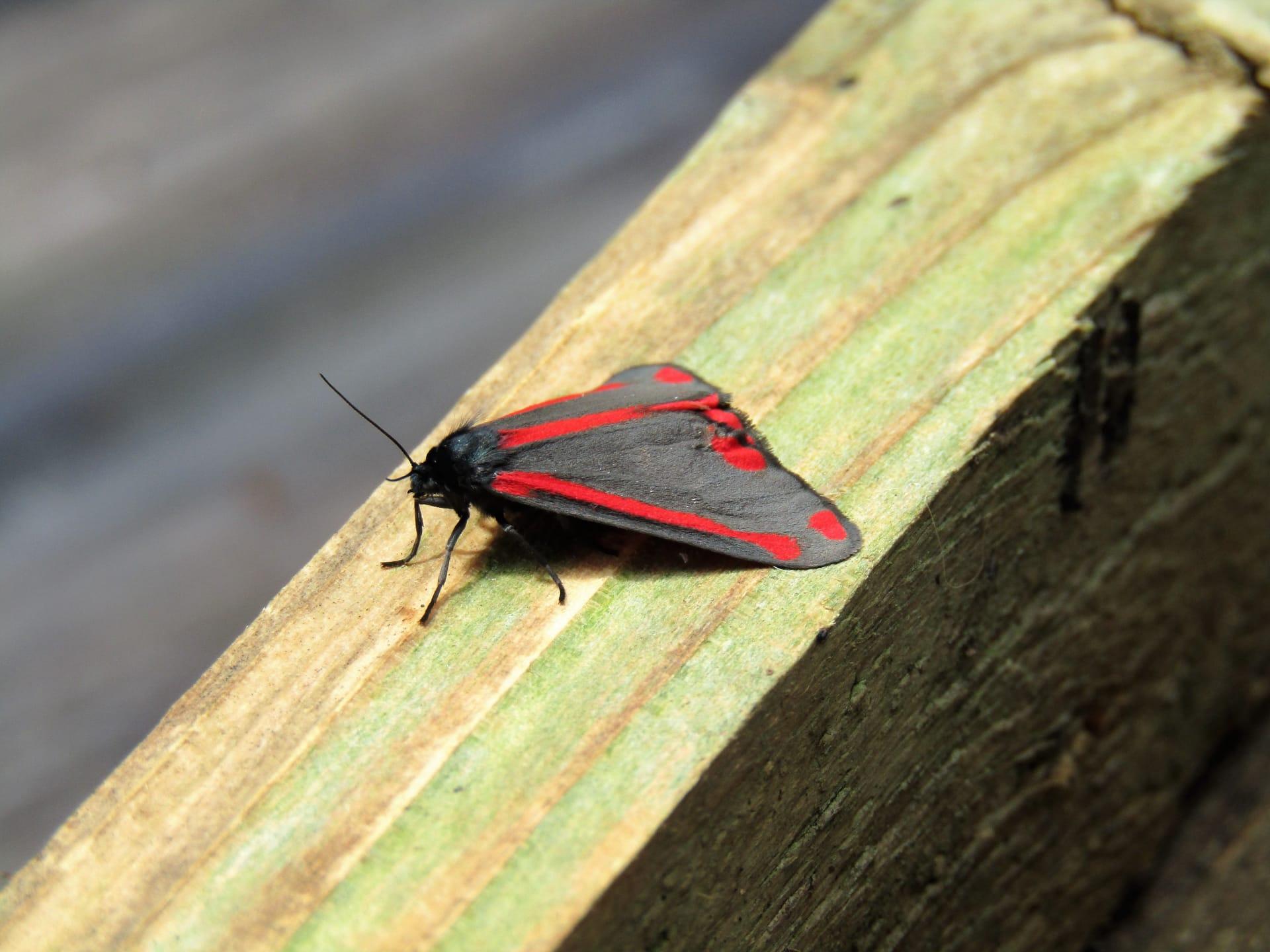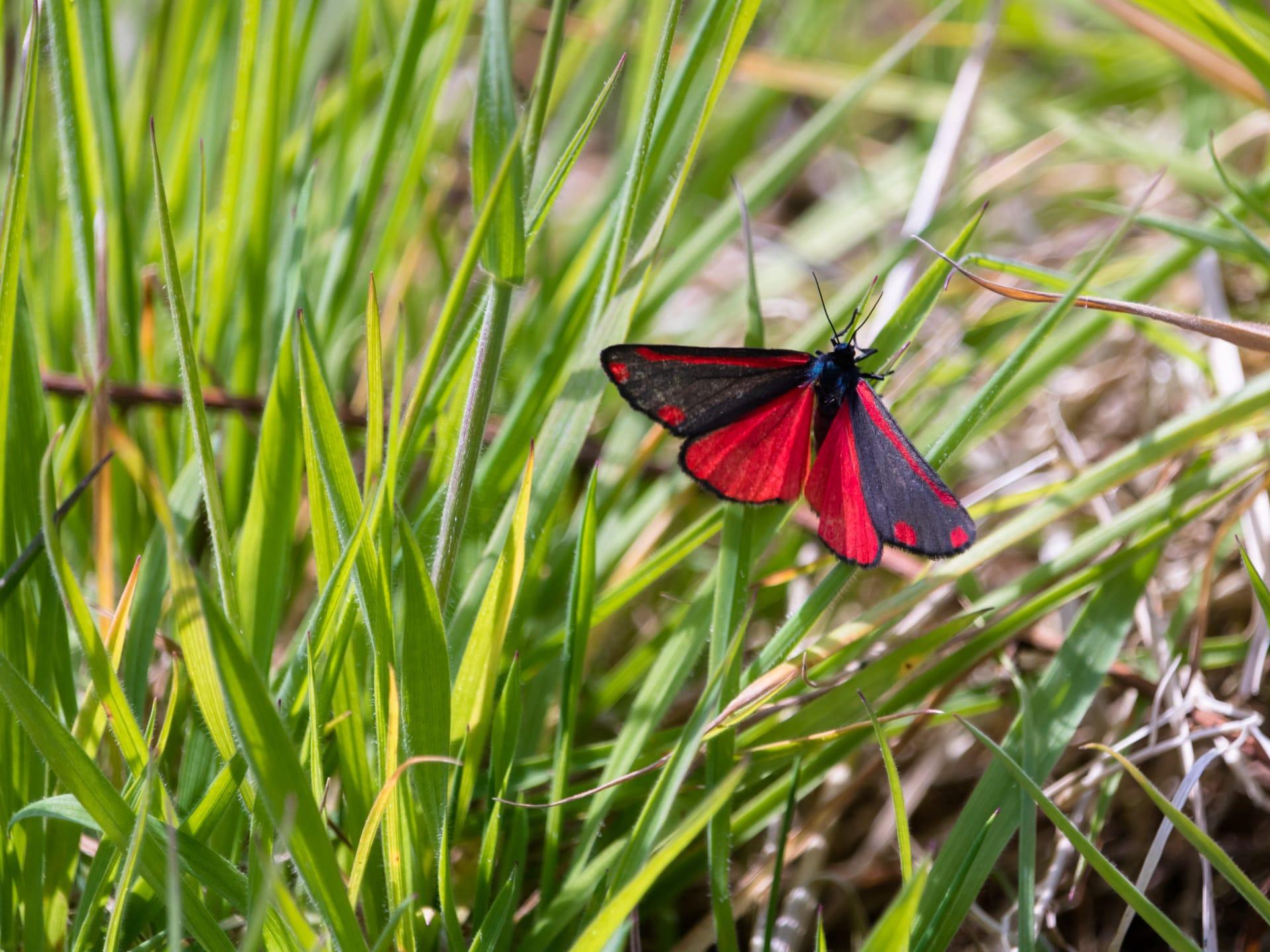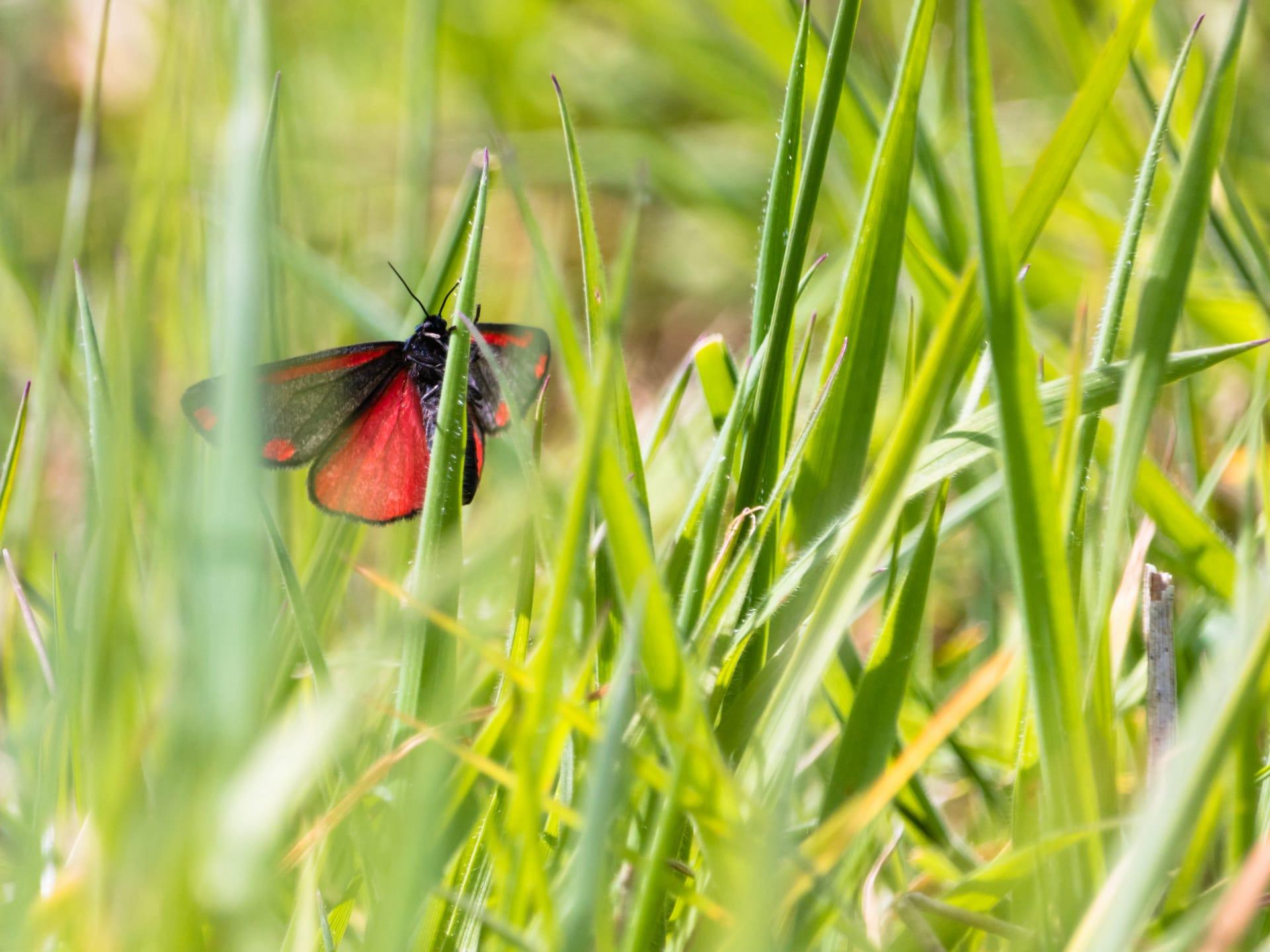Cinnabar Moth Characteristics
- Home /
- Mini Encyclopedia /
- Animal /
- Cinnabar Moth Characteristics
1
The Cinnabar Moth, scientifically known as Tyria jacobaeae, presents a striking appearance with its vibrant red and black wings. Adult moths typically span about 1.5 to 2 inches (3.8 to 5 cm) in wing length. Regarding their lifespan, these moths live approximately 11 to 12 months. However, their life as an adult moth is much shorter, lasting only around 3 to 4 weeks.
One of the most distinctive organs of the Cinnabar Moth is its proboscis. This tubular, coiled structure serves as a drinking straw, enabling the moth to feed on nectar from flowers. Remarkably, the proboscis can extend to several centimeters, allowing the moth to reach deep into flowers. This unique adaptation is crucial for their survival and reproductive success, as it aids in both feeding and pollination.

2
Question: What do Cinnabar Moth caterpillars eat, and how does this impact their color?
Answer: Cinnabar Moth caterpillars feed exclusively on the leaves of the ragwort plant. This diet is rich in alkaloids, which are toxic to most predators. Interestingly, these alkaloids are responsible for the caterpillars' vibrant yellow and black stripes, a warning coloration indicating their toxicity. This dietary choice not only provides nourishment but also a defense mechanism, making them unpalatable to many potential predators.

3
The Cinnabar Moth displays unique movement characteristics, particularly in its flight pattern. These moths are known for their swift and direct flight, often seen darting among flowers in search of nectar. They are most active during the day, which is somewhat unusual for moths, as many species are nocturnal.
In terms of feeding behavior, adult Cinnabar Moths primarily consume nectar from flowers. Their proboscis, when uncoiled, is adept at extracting nectar from a variety of flowers. Interestingly, the larvae, or caterpillars, have a completely different diet, feeding exclusively on ragwort leaves, which influences their growth and development.

4
Cinnabar Moths are typically found in a range of habitats, often preferring open areas like meadows, pastures, and along railway lines or roadsides. These environments provide ample ragwort, their primary food source during the caterpillar stage. They are commonly seen across Europe and have been introduced to North America and New Zealand for biological control of ragwort.
The reproduction of Cinnabar Moths involves laying eggs on the underside of ragwort leaves. Females can lay up to 300 eggs, usually in clusters. The emerging caterpillars feed voraciously on the ragwort leaves, undergoing several molts before pupating in the soil. This life cycle, from egg to adult, plays a critical role in controlling ragwort populations in their habitats.

5
Book: "Moths of the World: A Natural History" by David A. Carter. This comprehensive guide, published in the UK in the late 20th century, offers a detailed look into various moth species, including the Cinnabar Moth. Carter's work delves into their life cycles, habitats, and ecological importance, making it an informative read for both enthusiasts and researchers.
Book: "The Secret Life of Moths" by Paolo Viscardi. Published in the early 21st century, this book provides an intimate look into the world of moths, highlighting species like the Cinnabar Moth. Viscardi, an entomologist, combines scientific facts with captivating narratives, exploring the roles these insects play in our ecosystems and their fascinating biological traits.